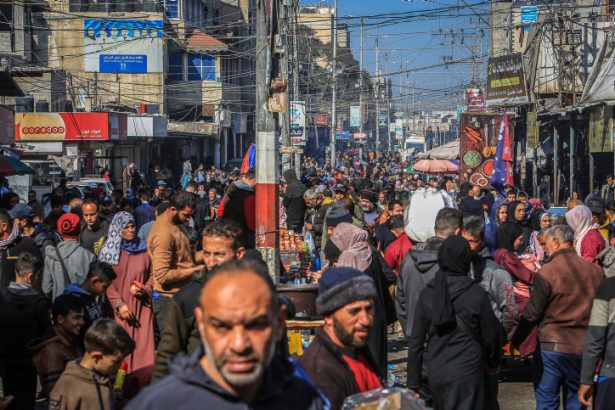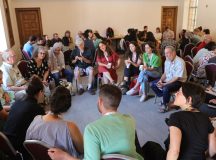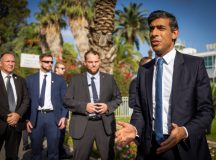Kamal Mashharawi is a Palestinian entrepreneur and peace activist from Gaza. He has written previously about his and his family’s ordeal during the war, and their fraught escape from the Gaza Strip, in The New Yorker and in the New York Times. Here, he outlines two prospective scenarios for Gaza – one in the event of the defeat of Hamas, and one in the event of its survival.
Discussing reconstruction and renewal may seem surreal right now, especially with the presence of Israeli tanks still in the narrow streets of Gaza. I saw first hand the devastation that has been wrought by this war, as myself and my family fled from the north to Khan Younis, and joined the 80 per cent of Gazans internally displaced, witnessing the scale of physical damage throughout the Strip, before managing to secure passage through Rafah into Egypt. The task at hand is epic in proportion. Nevertheless, our commitment is to shed light on how we can rebuild in the aftermath of the horrific destruction caused by war.
The existence of Hamas brigades, despite the war, has entered its hundredth day recently. The absence of a clear timeline or plan by the IDF makes it challenging to determine if Hamas will play a role in the post-war reconstruction and renewal strategy, a situation entirely influenced by the war’s outcome. Hence, we will explore two distinct post-war scenarios for Gaza.
Firstly, if Hamas does not lose the war and resists the intense IDF operation, which is impacting the civilian population more than the Hamas infrastructure, it is possible that the US and Israel will engage with Hamas, Fatah, and other Palestinian movements to discuss a long-term agreement. This could lead to the first elections in Gaza and the West Bank since 2006, resulting in the appointment of a legal representative for the Palestinian people, regardless of their political background.
The mission of the US, Israel, and Egypt will then be to guarantee full compliance with the agreement and the suspension of any military activity in both areas. Once the Palestinian people elect and choose the right person and government to lead the country, there must be an urgent establishment of an international fund for rebuilding Gaza and the surrounding Israeli cities. The fund must include long term rebuilding plans that will employ thousands of Palestinians and Israelis to take the initiative towards shaping a very new reality. While many may be hopeful about this scenario, it is yet to be seen if all the relevant stakeholders would comply with this sort of plan.
Amidst this scenario, Palestinian entrepreneurs and peacebuilders would play a crucial role in mapping an effective rebuilding strategy involving every aspect of the community, ensuring full compliance with the peace agreement and ending this era of repeated cycles of devastating violence. The involvement of Palestinian community leaders in the long-term peace process is essential for emphasising unity between the political and communal levels, and avoiding a recurrence of mistakes seen in the Oslo Accords, whose top-down and elite structure had precious little role for civil society.
Now for the second post-war scenario for Gaza. There is every chance that Israel will continue its operation in Gaza, despite the unprecedented number of casualties among the civilian population in Gaza and regardless of the international pressure and the newly launched ICJ case. As a result, Israel will continue to control Gaza militarily, and simply empower the UN agencies to provide the basic needs for the Palestinian people in Gaza, which may result in an absence of a clear rebuilding strategy for the strip. The situation in the entire strip may eventually – after much destitution and internal displacement – resemble, at best, that of Palestinian refugee camps in Gaza, the West Bank, and other neighbouring countries since 1948. Hardly the basis for what can become a Palestinian state that provides the opportunity, peace and security needed for Gaza’s 2.3 million residents.
Many Palestinians genuinely believe that Israel aims to wipe out Hamas and take control over most of Gaza and the lands in the West Bank, with a clear intention of undermining Palestinian sovereign rights. Nevertheless, I believe that there is a chance for solutions where both peoples can live together in the same place and implement a long-term strategic reconstruction and renewal plan. The steps that Israeli and Palestinian governing authorities – as well as their international allies – take in the coming months will determine which of these scenarios plays out. But civil society has a key role in shaping that decision too, presenting the ideas, pressure and urgency that are needed to ensure that leaders do not fail their people yet again, and that Gazans – as is too often the case – do not pay the heaviest price.




































